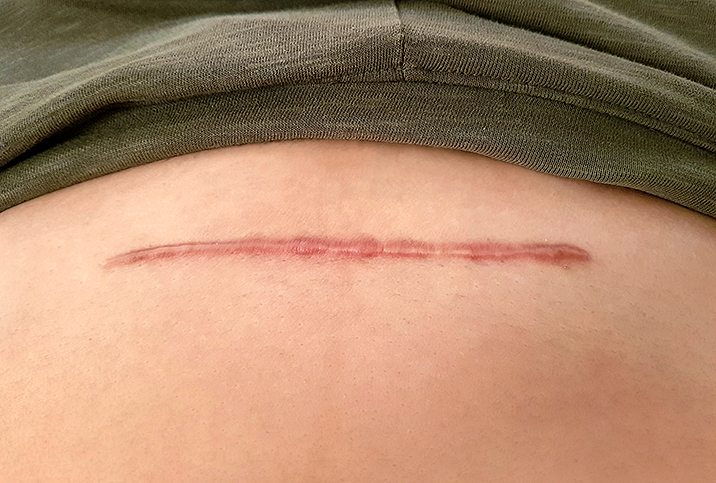How Fast Does Breast Cancer Spread?

How fast breast cancer can spread to other parts of the body depends on a variety of factors. The type of breast cancer, its grade and its stage all contribute to how fast it grows and spreads.
"Some breast cancers may spread out of the breast into the rest of the body within a number of months, whereas some may never grow out of the breast or take many years to do so," said Anne Peled, M.D., a breast cancer and plastic surgeon in San Francisco and the co-director of the Sutter Health CPMC Breast Cancer Program.
How breast cancer is graded
The grade of breast cancer refers to how different the tumor's cells are from typical, noncancerous breast cells, while the stage refers to the tumor's size as well as if and where it has spread in the lymph nodes or the rest of the body, Peled said.
Most tumors are graded as X, 1, 2, 3 or 4. The grade is an indicator of cancer's aggressiveness. The higher a cancer's grade, the more abnormal its cells are and the more aggressive the tumor. The more aggressive the tumor is, the more likely the cancer will spread and the faster it will do so.
"Breast cancer grade is one of the most important indicators of how fast a cancer is growing and how likely it is to spread," said Monique Gary, D.O., breast surgical oncologist and medical director of the Grand View Health Cancer Program in Pennsylvania.
"In general, grade 1 tumors are considered well-differentiated if the cells appear to be growing slower and more closely resemble normal breast tissue under the microscope," Gary explained.
Grade 2, or moderately differentiated tumors, have more aggressive features when examined under the microscope, growing and dividing more rapidly.
"Grade 3 tumors are considered poorly differentiated, which means that the cells are beginning to no longer look like normal breast cells under the microscope," Gary said. "Cells in grade 3 tumors are dividing so quickly that they don't have enough time to mature into normal-looking breast cells."
Grade 4 tumors are undifferentiated and look the most abnormal.
Breast cancer subtypes
After examining imaging tests and your pathology report, your medical team will determine your breast cancer subtype. Your subtype helps your medical team better decide on the appropriate course of treatment.
Types of breast cancer are named after the hormones and receptors that oncologists find in the cancer cells. The absence of certain hormone receptors and the presence of aggressive proteins and proteins that signal cell growth indicate how fast a tumor could grow, Gary explained.
Triple-negative breast cancer (TNBC) is a type of breast cancer where the tumor cells do not express estrogen, progesterone or Her2 receptors, Peled said. While TNBC does not have any Her2 receptors, Her2-positive breast cancers do.
Both triple-negative breast cancer and Her2-positive breast cancers tend to be a higher grade (more aggressive) and spread more quickly than hormone receptor-positive and Her2-negative breast cancers.
"While the prognosis for triple-negative and Her2-positive breast cancers is worse, overall survival rates are high if the cancer is caught at an early stage and treated appropriately," Peled said.
Screening, treatment and prognosis
Stage 0 to stage III breast cancers are contained within the breast or surrounding tissues. Healthcare providers view these stages as curable. Treating stages 0 to III typically involves surgery, medications and radiation therapy.
"For stage IV disease, treatments are primarily systemic," Gary said.
Systemic treatments affect the whole body, or entire systems within the body, and include oral medications, chemotherapy and more recent targeted therapies that specifically destroy proteins on breast cancer cells to kill them.
Once breast cancer has spread out of the breast and local lymph nodes, it is stage IV, or metastatic cancer, and is technically no longer curable, Peled explained.
However, she added that a stage IV breast cancer diagnosis isn't what it once was: It is not an immediate death sentence.
"As treatment options have evolved over time, some people are able to get to the point where cancer is no longer detectable and can potentially live many years with stage IV cancer," Peled said.
Symptoms as breast cancer spreads
As breast cancer advances within the breast, symptoms include more noticeable tumors, changes to the skin such as nodules, reddening and thickening, and abnormalities of the nipple like inversion or discharge.
If cancer has spread to the lymph nodes, you may experience pain, swelling or changes to the skin in that area. These symptoms are linked to blocked lymphatic drainage, which can happen when breast cancer reaches the lymph nodes.
Breast cancer most commonly spreads to the bones, liver, lungs and brain, and symptoms vary depending on the organ it is affecting.
"Tumor spread to the brain may cause nausea or vomiting, headaches or vision changes, while tumor spread to the bones may cause localized pain," Peled said.
Pay attention to your breast health
Detecting and treating breast cancer at an early stage is the best way to reduce the chance of it spreading. This means getting regular screenings so you can get the right diagnosis and start treatment before the cancer spreads to other parts of the body.
Peled said knowing your overall breast cancer risk—which includes your breast cancer family history and can include genetic testing—and getting appropriate screening is the best way to find it early.
If you have been diagnosed with breast cancer, it's important to get any new breast symptoms checked out by a healthcare provider as soon as possible, just in case they are related to cancer. Making appointments to discuss treatment options should be prioritized, though Peled stressed there is almost always enough time for a second opinion.
The bottom line
How fast breast cancer spreads is affected by its type, aggressiveness and stage. Early detection is important. If you have new symptoms, reach out to your medical team. Never hesitate to contact your doctor, if only for peace of mind.
Are you searching for a new healthcare professional? Giddy Telehealth takes the hassle out of finding a new doctor. With hundreds of high-quality doctors, many with same-day appointments, you can get your questions answered.


















